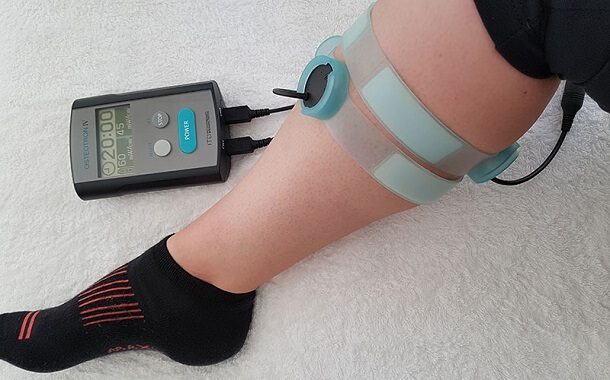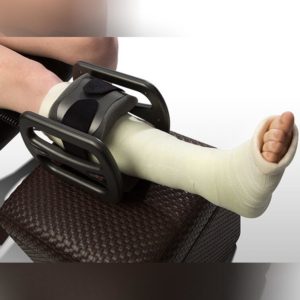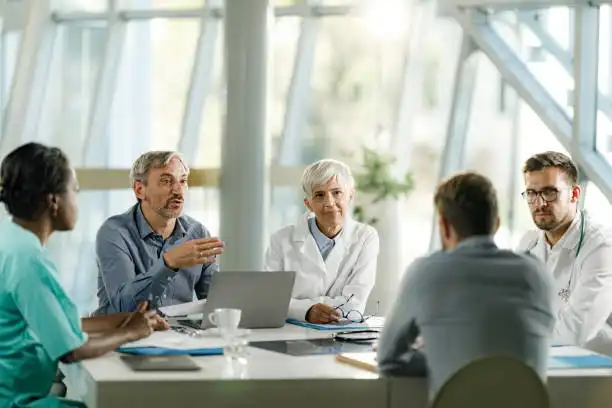Jonathan Cluett, MD, is a board-certified orthopedic surgeon with subspecialty training in sports medicine and arthroscopic surgery.
What to Know About Bone Stimulators for Fracture
Electrical stimulation therapy is a recent, popular alternative treatment. Bone growth stimulators are sometimes used for fractures that haven’t healed on their own.
Are bone stimulators effective?
Broken Bones
A bone may be partially or completely fractured. There are several different types of fractures, including:
- Open or compound fractures, where the skin is broken
- Transverse fractures, also known as horizontal fractures
- Oblique fractures, which have an angled pattern
- Comminuted fractures, where a bone breaks into three or more pieces
- Stable fractures, where pieces of the broken bone are lined up
After treatment, your body works to form new bone tissue and connect your broken bone together. For a fracture to heal, your bone needs stability, good blood supply, and nutrition.
Nonunion and Delayed Union Fractures
Most broken bones heal without problems. Out of an estimated 7.9 million fractures that happen each year in the United States, 5% to 10% of them don’t heal (nonunion) or take a longer than usual time to heal (delayed union).
Nonunion fractures typically happen when your bone doesn’t have enough blood flow or stability, or both. These fractures are also more likely if they were caused by a severe injury, like the kind experienced in a car crash, which reduces blood supply to the affected area.
Some other factors also increase the risk of your fracture not healing on its own, including:
- Infection
- Poor nutrition
- Severe anemia
- Old age
- Diabetes
- Low Vitamin D level
- Thyroid disorders
- Use of tobacco or nicotine
- A complicated fracture
- Medications such as anti-inflammatory drugs like ibuprofen and aspirin
If a broken bone doesn’t heal in nine months, it’s considered a nonunion fracture.
What Are Bone Stimulators?
A bone stimulator is a device that generates an electric current meant to encourage bone growth. It uses ultrasonic or pulsed electromagnetic waves. To be effective, bone stimulator treatment must be used every day.
Bone stimulators are either external or surgically implanted into the area of the affected bone. An implanted stimulator allows for constant stimulation directly at the fracture site but may cause infection.
Are Bone Stimulators Effective?
The effectiveness of electrical bone stimulators hasn’t been determined, and studies have had mixed results.
A 2008 review of scientific trials on electric stimulators found that pain was reduced in only one of the four trials.
Studies of the use of electrical bone stimulation have also found that it may speed up healing time in smokers.
One study found that healthcare costs were lower among those who used bone stimulators compared to those who received low-intensity pulsed ultrasound stimulation or neither treatment for their nonunion fractures.
But a different study found that those receiving bone stimulators had higher health-related costs over a year compared to those who didn’t use stimulators.
Other experts say that recent data doesn’t show the benefit of the use of these stimulators. They say that improvements in modern surgical techniques may have lessened the potential benefit of stimulators.
Cost of Bone Stimulators
If your doctor has prescribed a bone stimulator, check with your insurance to see if they cover the cost, or ask your doctor how much it will cost. The cost may depend on the manufacturer and type of bone stimulator.
An implanted electrical stimulator may cost up to $5,000.
Are Bone Stimulators Safe?
The use of bone stimulators hasn’t been found to cause any adverse side effects.
Experts say that bone stimulators shouldn’t be used in these situations:
- Pregnant women
- People with a growth disorder (skeletal immaturity)
- If your bone is stabilized with magnetic materials
- If your fracture gap is greater than 50% of the diameter of the bone
- If you have a “false joint” (pseudarthrosis)
- If you have a pacemaker or a defibrillator, unless you talk to your cardiologist first
Other Treatment Options for Nonunions
Treat the cause. In many cases, your doctor may be able to identify and treat the cause of the nonunion. There are many causes and factors of nonunions such as lack of Vitamin D and inadequate immobilization that can be reversed and treated.
Nutrition. Your fracture needs good nutrition to heal. Eat a well-balanced diet that includes calcium, vitamins C and D, and protein. Supplements aren’t usually effective unless you’re severely malnourished.
Bone graft. In this type of surgery, your doctor will use bone from another part of your body or from a cadaver to help start the healing process. Bone grafts provide fresh bone cells and chemicals that your body needs for bone healing.
Bone harvesting is usually done from the rim of your pelvis. It may be painful but won’t cause any structural, functional, or cosmetic problems.
Bone grafts don’t provide stability to the fracture site, though, so you may need some type of fixation to improve stability, such as:
- Internal fixation. This involves placing a rod in the inside canal of the bone or attaching metal screws and plates to the outside of the bone.
- External fixation. This uses a rigid frame to the outside of your affected arm or leg using pins or wires.
Show Sources
Asian Spine Journal: “Trends and Costs of External Electrical Bone Stimulators and Grafting Materials in Anterior Lumbar Interbody Fusion.”
Clinical Orthopaedics and Related Research: “Treatment of delayed union and nonunion with an implanted direct current stimulator.”
Indian Journal of Orthopaedics: “Bone stimulation for fracture healing: What’s all the fuss?”
Journal of Bone and Joint Surgery: American Volume: “Electrical stimulation for long-bone fracture-healing: a meta-analysis of randomized controlled trials.”
Journal of Diabetes and Metabolism: “Cost Savings Associated with the Use of Electrical Bone Growth Stimulation to Treat Diabetic Patients in the U.S. with Fracture Nonunion.”
OrthoInfo: “Fractures (Broken Bones),” “Nonunion.”
PodiatryToday: “Bone Growth Stimulation: What The Evidence Reveals.”
How Bone Growth Stimulators Work
Jonathan Cluett, MD, is a board-certified orthopedic surgeon with subspecialty training in sports medicine and arthroscopic surgery.
Updated on March 29, 2020
Stuart Hershman, MD, is a board-certified spine surgeon. He specializes in spinal deformity and complex spinal reconstruction.
Table of Contents
Table of Contents
Bone healing is a natural process. Our bone is constantly being replaced with new bone, and after a bone injury occurs, the body has a tremendous capability to heal the damage to the bone. People who sustain broken bones typically will heal these fractures with appropriate treatment that may include casts, realignment, and surgery. Sometimes bone healing is needed when people require surgical procedures to fuse bones together. This type of surgery is performed in the spine and joints throughout the body, and typically the bone heals without a problem.
:max_bytes(150000):strip_icc()/bone-growth-stimulator-4587797_final-89aee1292f8b4ca49e7f8288cec0850e.jpg)
Sometimes, however, bone healing does not occur without problems. It can take a long time for bone healing to occur (a delayed union), while other times the bone healing does not occur at all (a nonunion). To prevent these complications, doctors are constantly looking for ways to stimulate bone healing to occur more quickly and more reliably.
How Bone Stimulators Work
Bone stimulators come in a variety of shapes, sizes, and technologies. The most commonly used bone stimulators in orthopedics are electrical stimulators and ultrasound stimulators. Most modern bone stimulators are attached near the site of the fracture or fusion with a small battery pack and worn for a period of time each day that may last minutes or hours.
The stimulator emits a pulsed electromagnetic or ultrasonic impulse to the area where bone healing should occur.
The goal of a bone stimulator is to activate a series of receptors in the body to encourage a healing response. Essentially, the bone stimulator activates a pathway that releases chemicals within the body. These chemicals are signals inside of your body to progress fracture healing.
This type of process in the body is called a “cascade” and occurs when one signal stimulates another process to occur, and so on until the healing is complete. The hope of a bone stimulator is that this cascade is pushed along without stopping until the healing process is complete.
Effectiveness
Early studies of bone stimulator effectiveness seem to show two benefits:
- Less pain associated with the bone healing process
- Faster healing of the fractures
What these studies haven’t shown is that these differences lead to an improved functional outcome for the patients. This may seem puzzling—if there is less pain and faster healing, then why wouldn’t people be better off? Some researchers have suggested this is probably because the differences in pain and healing times are small and not significantly noticed by patients.
Companies that market and sell bone stimulators are eager to promote these differences, and they can sound dramatic. Keep in mind that the differences in people who use a bone stimulator are probably small, and may not lead to actual improvements experienced by the patient. That said, there does seem to be a role for a bone stimulator in the right setting.
When Are They Necessary?
Bone stimulators are currently not necessary for routine fracture healing.
There is no evidence to support their use in a typical fracture as they have not been shown to improve the outcome for patients.
It is certainly possible that down the road a bone healing stimulator may be used routinely, but at the present time, they have not been shown to make a difference in routine fracture healing.
Where they do seem to show some benefit is in non-healing fractures or fractures that are likely to be particularly troublesome to heal. Some of the reasons that may cause people to have problems healing fractures are injuries to the blood supply of the fracture, injuries to specific bones, and overuse related fractures. These injuries may include:
- Open fractures
- Stress fractures
- Scaphoid bone fractures
- Talus fractures
In addition to bone stimulators, there are other proven ways to accelerate fracture healing. Some of these are common sense, but their importance during times of healing cannot be overstated. It is critically important to avoid smoking tobacco, eat a healthy diet, and ensure adequate nutritional intake. These steps are best taken long before worrying about a bone stimulator.
A Word From Verywell
Bone healing typically proceeds without much problem. However, there are situations where people have problems healing bone after fractures or surgery to fuse the bone together. In these situations, there may be steps to help stimulate the body to heal bone. While the improvement may be small with the use of a bone stimulator, if it is the difference between healing and nonhealing, it may be critical. Bone stimulators are not used for routine bone healing, but only in situations where there are particular circumstances that make healing less likely. In these situations, wearing a bone growth stimulator may help accelerate fracture healing.
Verywell Health uses only high-quality sources, including peer-reviewed studies, to support the facts within our articles. Read our editorial process to learn more about how we fact-check and keep our content accurate, reliable, and trustworthy.
- Childs SG. Stimulators of bone healing. Biologic and biomechanical. Orthop Nurs. 2003;22(6):421-8. doi:10.1097/00006416-200311000-00010
- Aleem IS, Aleem I, Evaniew N, et al. Efficacy of electrical stimulators for bone healing: A meta-analysis of randomized sham-controlled trials. Sci Rep. 2016;6:31724. doi:10.1038/srep31724
- Victoria G, Petrisor B, Drew B, Dick D. Bone stimulation for fracture healing: What’s all the fuss?Indian J Orthop. 2009;43(2):117-20. doi:10.4103/0019-5413.50844
Additional Reading
- Griffin XL, Costa ML, Parsons N, Smith N. Electromagnetic field stimulation for treating delayed union or non-union of long bone fractures in adults. Cochrane Database Syst Rev. 2011 Apr 13;(4):CD008471. doi:10.1002/14651858.CD008471.pub2
By Jonathan Cluett, MD
Jonathan Cluett, MD, is board-certified in orthopedic surgery. He served as assistant team physician to Chivas USA (Major League Soccer) and the United States men’s and women’s national soccer teams.
Bone Growth Stimulator Cost


Bone Stimulation (BGS) is a therapy that your surgeon may prescribe following a spinal fusion procedure. A bone growth stimulator is an additional device worn after cervical (neck) or lumbar (back) surgery. BGS can be used to help fuse the spinal bone after a fusion procedure or as a treatment for failed fusion.
How Much Does a Bone Growth Stimulator Cost?
The price of a bone growth stimulator will be influenced by some factors such as the place you buy it from, the brand, the geographical location, and the type you like. Expect to pay anywhere between $2,100 and $5,100 for a brand-new external stimulator, while the cost of an invasive stimulator will be influenced by the doctor’s fee, the body areas, and the type of fracture.
For example, for an internal spinal cord stimulator, you will have to pay anywhere between $15,500 and $51,000, or even more if you don’t have health insurance.
One of the most popular bone stimulator brands is the Orthofix and it costs anywhere between $120 and $1,100. The price range is the same for some other brands such as Nephew, Biomet, Don Joy and Smith, and Exogen. In general, this price range can be found on the secondhand market. For example, there are more than 200 listings on the Med Now website where the majority of the prices are less than $750.
There are some members of the Spine-Health.com forum who said that they had to pay anywhere between $3,100 and $5,200 for their bone growth stimulator, with their health insurance policy covering it.
According to members of the Foot.com forum, the price of a bone growth stimulator is anywhere between $2,600 and $3,700, without health insurance.
Types of bone growth stimulators

Bone growth stimulators come in a variety of shapes, sizes, and technologies. The most commonly used bone growth stimulators in orthopedics are electrical stimulators and ultrasound stimulators.
Most modern bone growth stimulators are attached near the site of a fracture or fusion with a small battery pack and worn for a period of time each day that can last minutes or hours. The stimulator emits a pulsating or ultrasonic electromagnetic pulse in the area where bone healing should occur.
The purpose of a bone growth stimulator is to activate a series of receptors in the body to encourage a healing response. In essence, the bone stimulator activates a pathway that releases chemicals into the body. These chemicals are signals from the inside of the body to push the healing process of fractures.
You might also like our articles about the cost of a bone density scan, a Tommy John surgery, or a broken wrist surgery.
Also, bone growth stimulators are divided into two categories: internal and external.
Internal bone growth stimulators are planted inside the patient’s body through a surgical procedure. There are no risks for the surgery and the stimulator can be implanted in the fracture area totally or partially. Once the fracture is recovered, the stimulator is removed through another surgical procedure.
The external bone growth stimulator is a non-invasive method used to repair a bone fracture. The patient has to wear it two to nine hours per day, anywhere between three months and one year, depending on the doctor’s prescription. This stimulator comes with small electrodes or skin pads that are placed directly on the broken area in order to send out electronic waves so the new bone-cell formation is increased.
Important things to consider
Regardless of the type of the external stimulator and whether it is brand new or used when you buy it, this should come with the instructions manual, a control unit, a battery charger, an adjustable treatment coil, a grounding plug, and a link cable.
- less pain associated with bone healing;
- faster fracture healing.
How can I save money?
Make sure you talk with your health insurance company before making an appointment. Health insurance policies are different, but most of them cover this procedure only if it is deemed medically necessary. It would be good to know how much would be your responsibility and which providers are in the network.
Take into consideration the possibility to rent external units from manufacturers that sell their brands. The cost of renting such an external stimulator depends on the period of time you will need it. For example, you will have to pay around $390 for a 90-day rental, while for a 120-day rental you will have to pay around $420. Ask at a local medical supplies retailer if there are available any rental options.
Look on the Internet for slightly used or refurbished external stimulators because these are cheaper. This way you may be able to save around 60% of the costs of a bone growth stimulator.
Alec Pow is a thorough and methodical Financial and Business Analyst with over 15 years of experience in financial statement analysis, Foreign exchange derivative hedging instruments analysis, modeling, and risk management, with a long history of writing for big news publications like Forbes, MSN.com, Washington Post, and many more.
Latest posts by Alec Pow (see all)
- Quiznos Menu Prices – February 8, 2023
- Cost to Build a Concrete Trash or Dumpster Enclosure – February 8, 2023
- Cost to Replace a Fuel Tank – February 8, 2023






